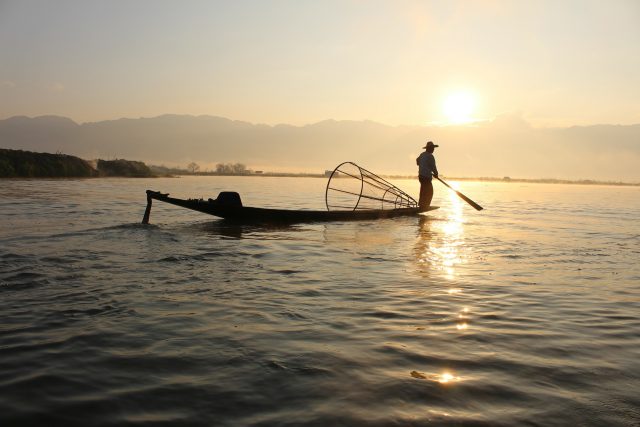Fishing in Asia is arguably one of the few industries to have avoided disruption from technological advancements. Fishermen still rely more on instinct than information or data. Sellers still operate in local markets. And fisheries have been slow to embrace advancements. However, the tide may finally be turning in favor of tech.
In Thailand, the COVID-19 pandemic forced fishermen to sell their products online instead of through middlemen. An online database was created by the Thai Sea Watch Association that allows consumers to buy seafood directly from fishermen who ship the products via a delivery service.
It’s seen as a win-win situation as fisherman bring in greater profits than under the traditional selling method while consumers pay less for fresh seafood. And while placing products on an online market may seem as simple as putting a worm on a hook, there are some challenges that the Thai Sea Watch Association is working to solve.
Wichoksak Ronnarongphairi, Thai Sea Watch Association President, told the Bangkok Post that while fishermen have knowledge of technology, some do struggle to understand the ins-and-outs of online trading. The organization is helping them overcome that by creating how-to guides and holding local training sessions.
See more: Rainbowfish explores the bottom of the ocean
Satellites improve fishing in Indonesia
Inmarsat; the Indonesian Ministry of Marine Affairs and Fisheries; the Indonesia Department of Fisheries; and the UK Space Agency joined together on a project to test the benefits and challenges using satellite-based Vessel Monitoring Systems in the country.
The three-year innovation project saw low-cost, solar-powered satellite technology placed on smaller fishing vessels in order to help improve safety, efficiency, ship-to-shore contact and offer potential fish stock sustainability improvements.
Indonesia is Southeast Asia’s largest fish producer, but long coastlines and remote fishing grounds has made it difficult and costly to monitor vessel movements in the country’s waters. The results of the project were positive and highlight the potential technology can have when it comes to fishing in Asia.
“Together with the fishing community, government, technologists and specialists in fisheries management, we have prototyped a ‘Made-in-Indonesia’ satellite communications device for fishers. We have also ensured that pricing reflects the economics of the sector, which contributes to affordability,” James Cemmell, Vice President, Government Engagement, Inmarsat, noted in a press release. “The results of the study have been independently verified and can be used to further modernize fisheries management in Indonesia. This can deliver the potential for more sustainable fish stocks, safer, better conditions for fishers, and improved economic growth from fisheries businesses.”
India aims to modernize fishing sector as part of ‘Blue Revolution’
Indian Prime Minister Shri Narendra Modi approved Pradhan Mantri Matsya Sampada Yojana (PMMSY), an ambitious project that aims to create sustainable and responsible development of the country’s fisheries sector. In what is being dubbed the ‘Blue Revolution’, the project is part of the government’s INR 20 trillion (USD 264.4 billion) economic recovery package.
“It will invigorate (fishing) with latest technology, infrastructure and ensure financial assistance. Our hardworking fishermen will gain immensely,” Modi explained on Twitter.
The government outlined a few key aims of the package in a recent release. These include the creation of critical infrastructure that modernize and strengthen the value chain; augmenting fish production and productivity; and addressing the critical gaps in the fisheries sector. However, details on how technology will assist in these efforts remains unclear.


































